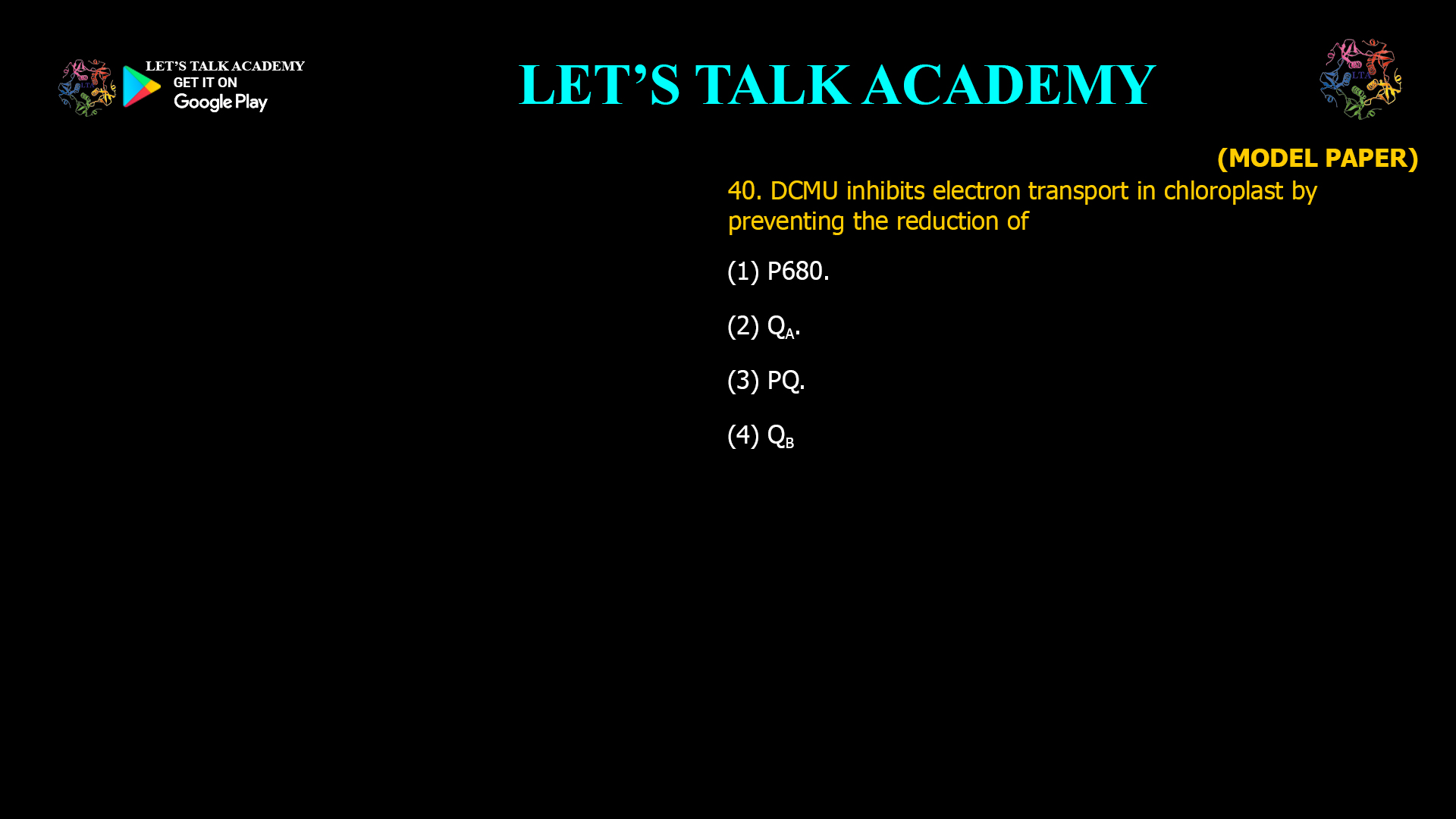- DCMU inhibits electron transport in chloroplast by preventing the reduction of
(1) P680. (2) QA.
(3) PQ. (4) QBDCMU inhibits electron transport in chloroplasts by preventing the reduction of (4) QB.
DCMU (3-(3,4-dichlorophenyl)-1,1-dimethylurea) binds specifically to the QB site of Photosystem II and blocks the transfer of electrons from QA to QB. As a result, plastoquinone B (QB) cannot be reduced and electron flow from PSII to the rest of the electron transport chain stops.
DCMU Action: Blocking Electron Transport in PSII
Introduction
Key phrase: DCMU inhibitor electron transport PSII QA QB reduction chloroplast herbicide mechanism
DCMU is a potent inhibitor of photosynthesis that targets the electron transport chain in the chloroplast. Through its specific binding, DCMU disrupts the essential process of electron flow in PSII, thwarting ATP and NADPH production and halting plant growth.
Explanation of Each Option
-
(1) P680:
Incorrect. P680 is the special pair chlorophyll in PSII where light-induced electron transfer begins. DCMU does not act at the P680 site, but further downstream on quinone sites. -
(2) QA:
Incorrect. QA is the first (primary) plastoquinone electron acceptor in PSII, but DCMU does not inhibit its reduction; QA receives electrons from pheophytin normally. -
(3) PQ:
Incorrect. Plastoquinone (PQ) is a pool molecule in the membrane, but DCMU acts at the specific QB site within PSII and not on the mobile PQ molecules directly. -
(4) QB:
Correct. DCMU binds to the QB site on PSII and blocks electron transfer from QA to QB, inhibiting the reduction of the secondary quinone and thus halting overall electron flow and oxygen evolution in photosynthesis.
Key Facts: DCMU and Electron Transport in Chloroplasts
-
Binds at QB site in PSII reaction center.
-
Prevents reduction of QB and halts non-cyclic photophosphorylation and oxygen evolution.
-
Widely used in plant physiology and photosynthetic research to dissect electron flow.
-



